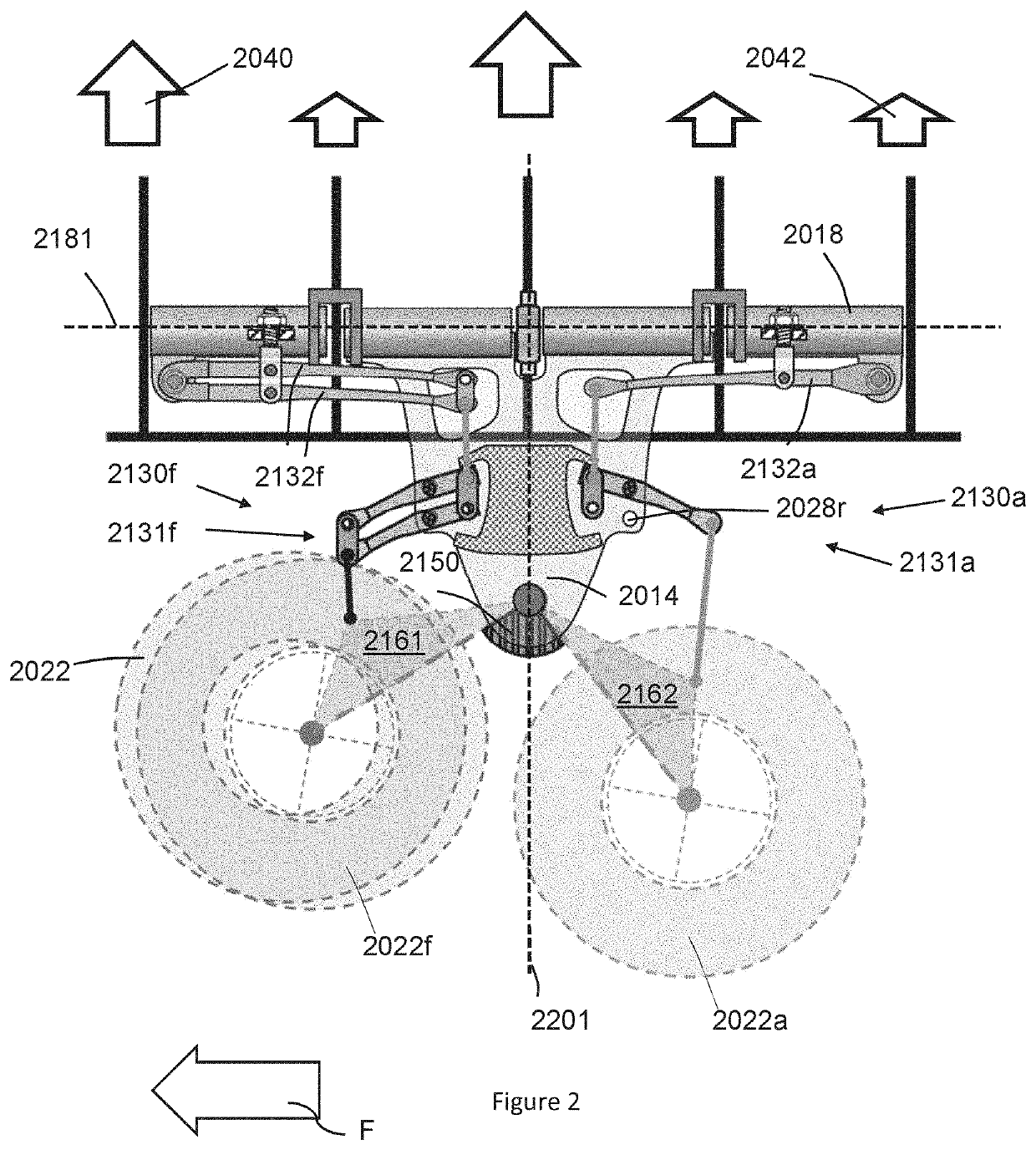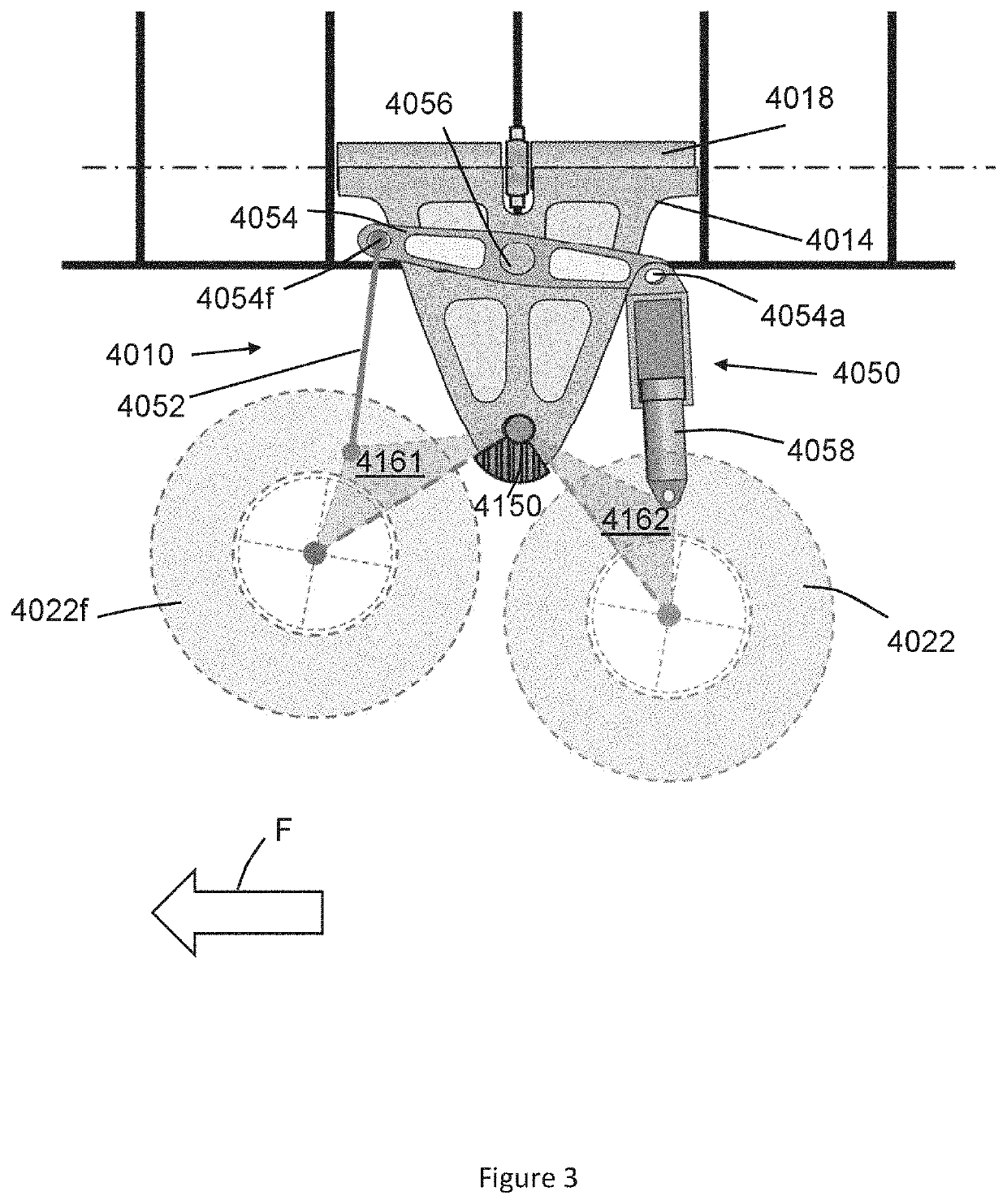Aircraft landing gear assembly
a technology for landing gear and aircraft, which is applied in the direction of landing gear, aircraft components, undercarriages, etc., can solve the problems of resonance effect and large dynamic airframe loading, and achieve the effect of effective lever stopping, convenient maintenance and improved stability
- Summary
- Abstract
- Description
- Claims
- Application Information
AI Technical Summary
Benefits of technology
Problems solved by technology
Method used
Image
Examples
first embodiment
[0048]FIG. 1 shows schematically an aircraft landing gear assembly 10 according to the invention, suitable for use on an aircraft (such as that shown on FIG. 7). The fore direction is shown in FIG. 1 with the arrow labelled F. The aircraft landing gear assembly comprises a bracket and spring assembly arrangement for transmitting ground loads, which has various potential design advantages as compared to prior landing gear assemblies which transmit the majority of ground loads utilising a single elongate landing gear leg with an integrated shock absorber (referred to in the art often as an oleo landing gear design). The bracket acts as the main fitting for the aircraft landing gear assembly.
[0049]The landing gear assembly 10 of FIG. 1 includes a bracket 14 extending from a hinge portion 18 to a first mounting point 20 for mounting at least two wheels 22, 23 via one or more pivoting levers 16. The hinge portion 18 allows for mounting of the bracket 14 for rotation relative to a landing...
second embodiment
[0072]FIG. 2 shows a landing gear assembly similar to that shown in FIG. 1. Like reference numerals are used for like parts, but adding 2000 to the numbers used in FIG. 1. The main differences between the two embodiments will now be described. The landing gear 2010 has two levers 2016 which between them carry three wheels 2022. In this embodiment, the fore wheel 2022f is mounted such that it is arranged centrally (in the span-wise direction) relative to the bracket. The centre plane of the wheel 2022f—such a plane having the wheel axis as its normal—is substantially coplanar with the corresponding centre plane of the bracket (or at least, the bracket 2014 and wheel 2022f are so arranged that the main load bearing structure of the bracket extends to either side of the centre plane of the wheel). The central mounting of the fore wheels 2022f and 2022 is readily achieved as a result of the spaced apart parallel plates that form the bracket 2014. The fore wheels 2022 in front of the af...
third embodiment
[0075]FIG. 3 shows a two-wheel landing gear assembly similar to that shown in FIGS. 1 and 2 Like reference numerals are used for like parts, but adding 4000 to the numbers used in FIG. 1. The main differences between the previous embodiments will now be described. The bracket 4014 is shorter in the fore-aft direction at its upper end, in that the hinge portion is shorter. The loads transmitted into the aircraft body are therefore more concentrated (in the fore-aft direction). In a variation of this embodiment, the hinge portion is the same length and the bracket 4014 has a substantially identical shape as in FIG. 1. The bracket 4014 also uses a shock absorber and linkage system 4050 instead of one or more spring assemblies. As such the structure providing the stops that interact with the spring system as shown in FIG. 1 (which stop structure may be modular—and separately removable—in any case) is not present in the embodiment of FIG. 3. The shock absorber and linkage system 4050 co...
PUM
 Login to View More
Login to View More Abstract
Description
Claims
Application Information
 Login to View More
Login to View More - R&D
- Intellectual Property
- Life Sciences
- Materials
- Tech Scout
- Unparalleled Data Quality
- Higher Quality Content
- 60% Fewer Hallucinations
Browse by: Latest US Patents, China's latest patents, Technical Efficacy Thesaurus, Application Domain, Technology Topic, Popular Technical Reports.
© 2025 PatSnap. All rights reserved.Legal|Privacy policy|Modern Slavery Act Transparency Statement|Sitemap|About US| Contact US: help@patsnap.com



